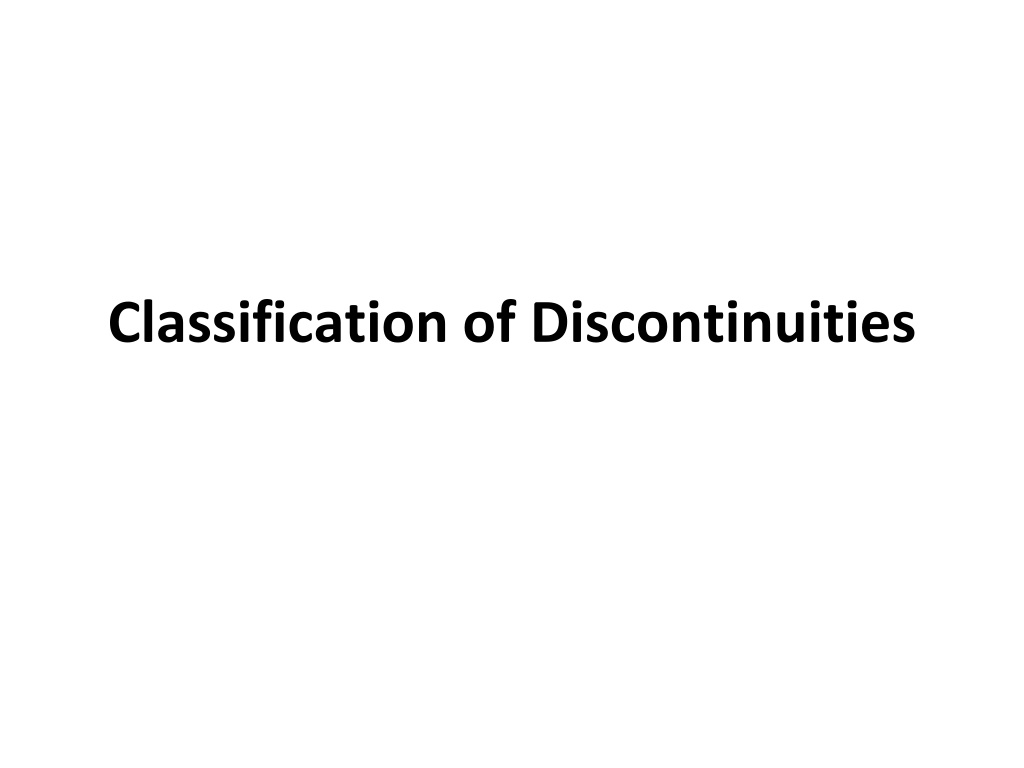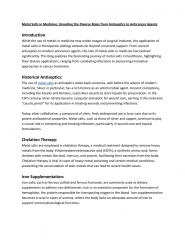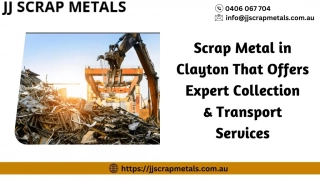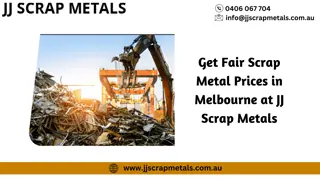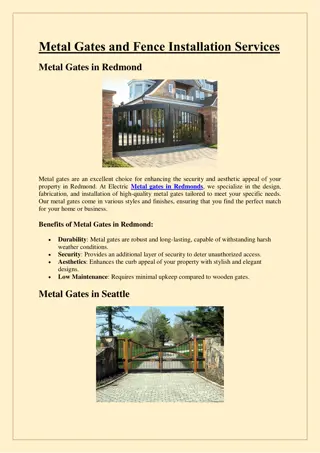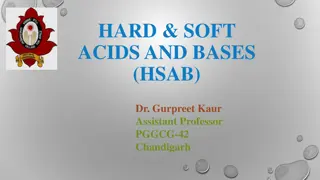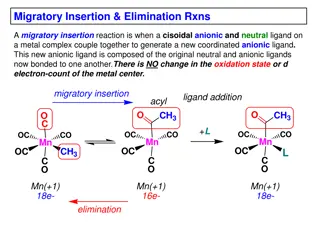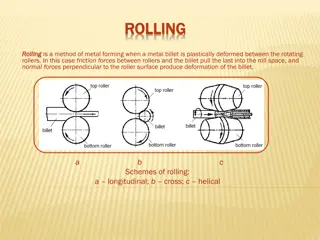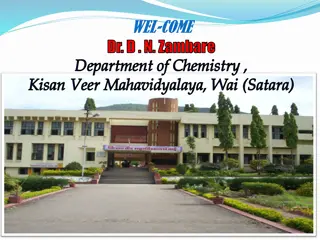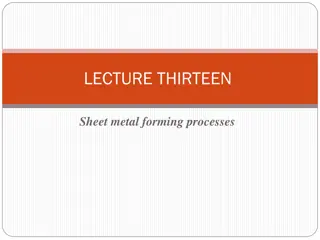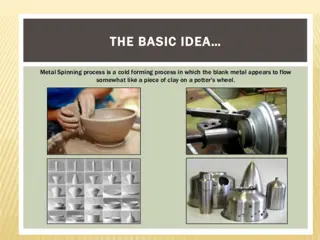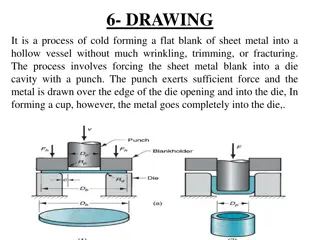Understanding Classification of Discontinuities in Metal Processing
Classification of discontinuities in metal processing involves identifying interruptions in the normal physical structure, such as cracks, seams, and inclusions, which may or may not be defects. Discontinuities can be surface or subsurface, with surface ones being more likely harmful. The origins of defects can be grouped into three stages: Inherent, Processing, and Service-Induced. Inherent discontinuities are related to the original solidification of metal, while defects in metals can be attributed to various processing methods. A detailed example of steelmaking highlights the stages involved in the process.
Download Presentation

Please find below an Image/Link to download the presentation.
The content on the website is provided AS IS for your information and personal use only. It may not be sold, licensed, or shared on other websites without obtaining consent from the author. Download presentation by click this link. If you encounter any issues during the download, it is possible that the publisher has removed the file from their server.
E N D
Presentation Transcript
Classification of Discontinuities Definitions Discontinuity An interruption (crack, forging lap, seam, inclusion, porosity, etc.) in the normal physical structure or configuration of an article It may or may not be a defect Defect a discontinuity that interferes with the usefulness of a part or exceeds acceptability limits established by applicable specifications Not all discontinuities are defects Surface discontinuity a discontinuity open to the surface May be observed through VT, PT, or MT More likely harmful to an article than a subsurface discontinuity
Classification of Discontinuities More Definitions Subsurface discontinuity a discontinuity that is not open onto the surface of an article Nonrelevant indication - indications that are not due to discontinuities May be due to abrupt changes in article shape, surface roughness, etc. Classification of Defects by Origin Typically grouped into 3 stages: Inherent Processing Service-Induced (also call In-service)
Classification of Discontinuities Inherent Discontinuities 1ststage of discontinuity Related to the melting and original solidification of metal in the ingot (i.e. original steel-making process) Inclusions Porosity Pipe
Classification of Discontinuities Some reasons there are discontinuities and defects in metal? Some of the reasons discontinuities and defects in metals are attributed to the processing of the ore to the casting process to the hot or cold working process. Take casting for example: there are several casting defects which are normally broken down into five main categories: gas porosity, shrinkage defects, mold material defects, pouring metal defects, and metallurgical defects. As further examples of some of the reasons discontinuities and defects in metals the processing of iron ore to make still is shown in the following slides. Imagine the many places that discontinuities and defects could be generated in this process.
Classification of Discontinuities Example: Steps in the Steelmaking Process 1) Iron ore, coke, and limestone are fed into the top of a blast furnace Coke is a solid carbon fuel obtained from coal Limestone is calcium carbonate 2) As the coke burns, the oxygen is removed from the iron ore 3) The limestone reacts with the molten iron to remove impurities 4) The impurities form a slag which floats on the surface of the metal pool. This slag is periodically removed from the furnace
Classification of Discontinuities Example: Steps in the Steelmaking Process 4) The molten iron is drawn from the furnace and poured into ingot molds called pig iron 5) Pig iron contains 3-5% carbon; further refining is required to remove the excess carbon and improve the properties of the steel. Iron with less than 2% carbon is typically called a steel. Types of Furnaces Blast Furnace (shown) Basic Oxygen Furnace Electric Furnace
Classification of Discontinuities Inclusions Non-metallic impurities, such as slag, oxides, and sulfides that are present in the original ingot Through rolling of raw material into billets or bar stock, these impurities form stringers , or lines Often irregularly shaped and in groups Usually not objectionable, except when they occur in critical areas, on highly-stressed surfaces, or in unusual numbers
Classification of Discontinuities Inclusion Example Silicate Stringers Discrete Alumina Particles Globular Sulphides resulting from Rare Earth Metal Treatment Type II Sulphide Stringer
Classification of Discontinuities Porosity Due to gas bubbles being trapped in the material prior to solidification Similar to bubbles in a carbonated drink Bubbles generally round or spherical in shape
Classification of Discontinuities Pipe A discontinuity in the center of the ingot, caused by cavities formed during solidification Becomes elongated in rolling operations Not usually visible on the surface of the article
Classification of Discontinuities Processing Discontinuities 2nd stage of discontinuity Formed by forming or fabrication operations Typically subdivided into: primary processing discontinuities casting, rolling, forging secondary processing discontinuities machining, grinding, heat treating, welding, plating
Classification of Discontinuities Primary Processing Discontinuities - Casting Inclusions Porosity Cold shuts Hot tears Shrinkage cavities
Classification of Discontinuities Casting Discontinuity Examples Porosity Sand Inclusion
Classification of Discontinuities Primary Processing Discontinuities - Casting Cold shut due to lack of fusion between two streams of metal as it flows into the cast Hot tear due to difference in cooling rates between thin and thick sections (a crack formed while the casting is cooling)
Classification of Discontinuities Primary Processing Discontinuities - Casting Shrinkage cavity due to inadequate metal to fill the cast mold following shrinkage of the cast upon cooling
Classification of Discontinuities Primary Processing Discontinuities - Forming Rolling Discontinuities Laminations Improperly fused layers of material Can be seen from the cross-sectional view of rolled materials Stringers, pipe also caused by rolling Forging Discontinuities Bursts - surface or internal ruptures due to forging at improper temperatures Laps folding of metal in a thin plate onto surface of forging
Classification of Discontinuities Secondary Processing Discontinuities Machining Tears due to use of dull tools or cutting too deep Grinding Cracks Due to localized overheating Heat Treating Stress cracks due to unequal heating or cooling
Classification of Discontinuities Secondary Processing Discontinuities - Welding Welding Undercut Lack of fusion Lack of penetration Inclusions Porosity Stress cracks Crater cracks
Classification of Discontinuities Secondary Processing Discontinuities - Welding Incomplete fusion Lack of penetration
Classification of Discontinuities Secondary Processing Discontinuities - Welding Slag Inclusion
Classification of Discontinuities Secondary Processing Discontinuities - Welding Porosity
Classification of Discontinuities Service-Induced Discontinuities Discontinuities caused by fatigue, corrosive environments, or overheating Fatigue Cracks Develop at areas of high stress concentrations such as holes, fillets, keyways, etc. May be due to mechanical or thermal fatigue Once crack initiates, it can quickly propagate resulting in failure
Classification of Discontinuities Mechanical Fatigue Failure of a part under repeated fluctuating stresses Applied stresses are below the tensile strength of the material Ex. Repeated loading and unloading of flow through a pipe 1842 - Versailles train wreck Derailment due to broken locomotive axle Crack growth occurred due to repeated loading in this area of high stress concentration
Classification of Discontinuities Mechanical Fatigue 1954 de Havilland Comet plane crashes Two separate crashes due to metal fatigue caused by repeated pressurization and depressurization of the cabin Failure occurred at cracks that started at riveted joints Model was grounded and did not fly again until 1958
Classification of Discontinuities Thermal Fatigue Due to repeated heating and cooling of a part Cracks resulting from large thermal gradients are usually multiple and often have an alligator skin appearance To reduce chance of failure, materials must be loaded below their fatigue strength
Classification of Discontinuities Corrosive Environments Corrosive environments can lead to: Embrittlement When a material loses its ability to elastically deform it breaks rather than stretches Stress corrosion cracking (SCC) Combination of stress and a corrosive environment Different materials react to different corrosives
Classification of Discontinuities Corrosive Environments December, 1967 collapse of Silver Bridge at Point Pleasant, WV Rust in an eye bar joint caused a stress corrosion crack Initial crack 0.1 deep High bridge loading and low temperatures caused crack to propagate to point of failure 46 people killed
Classification of Discontinuities Material Losses Service-Induced Discontinuities also due to loss of material Wear Erosion Corrosion
